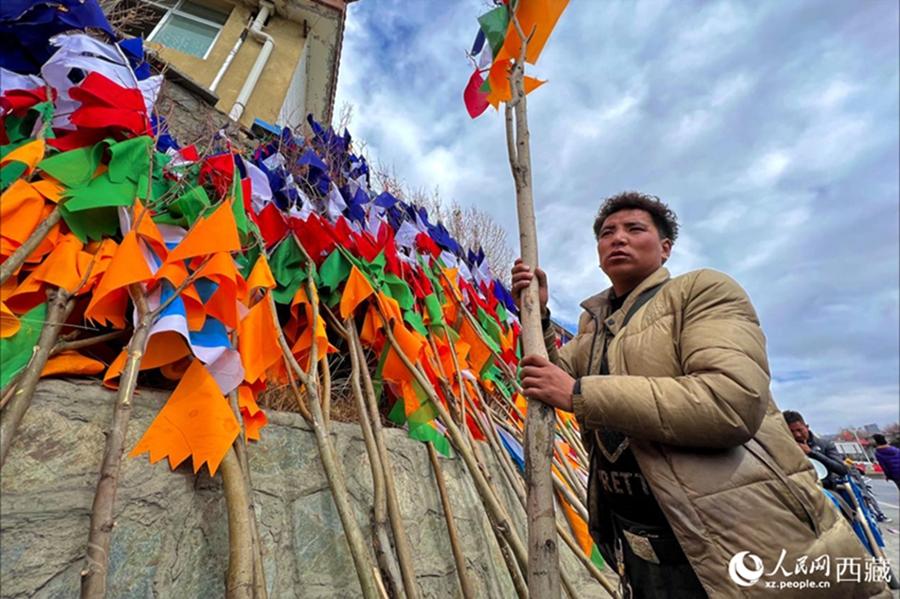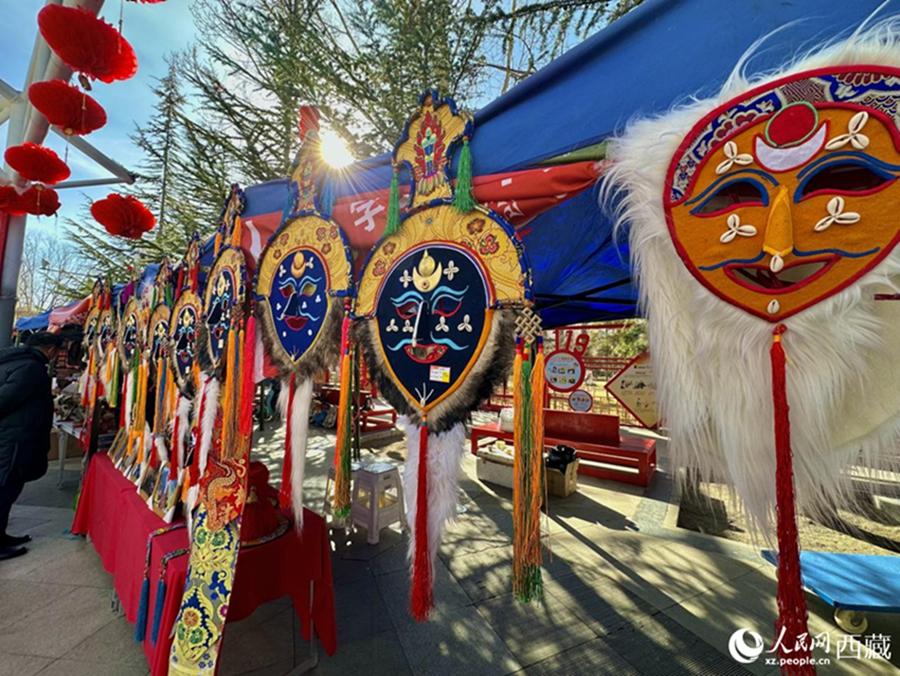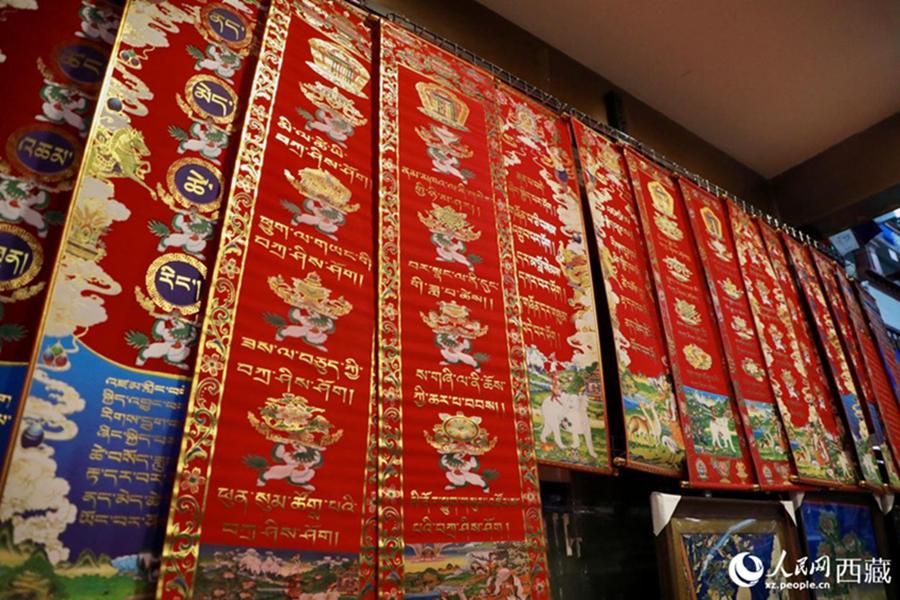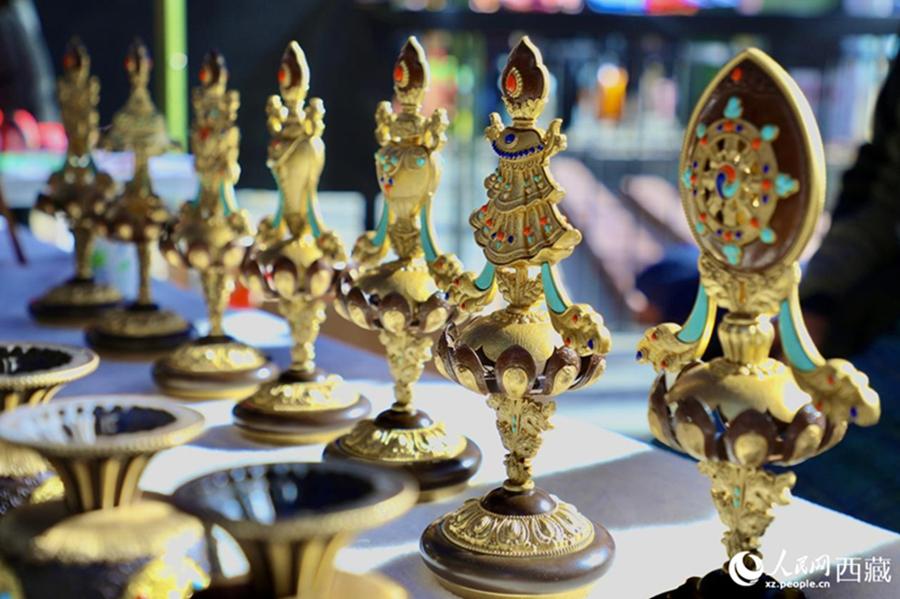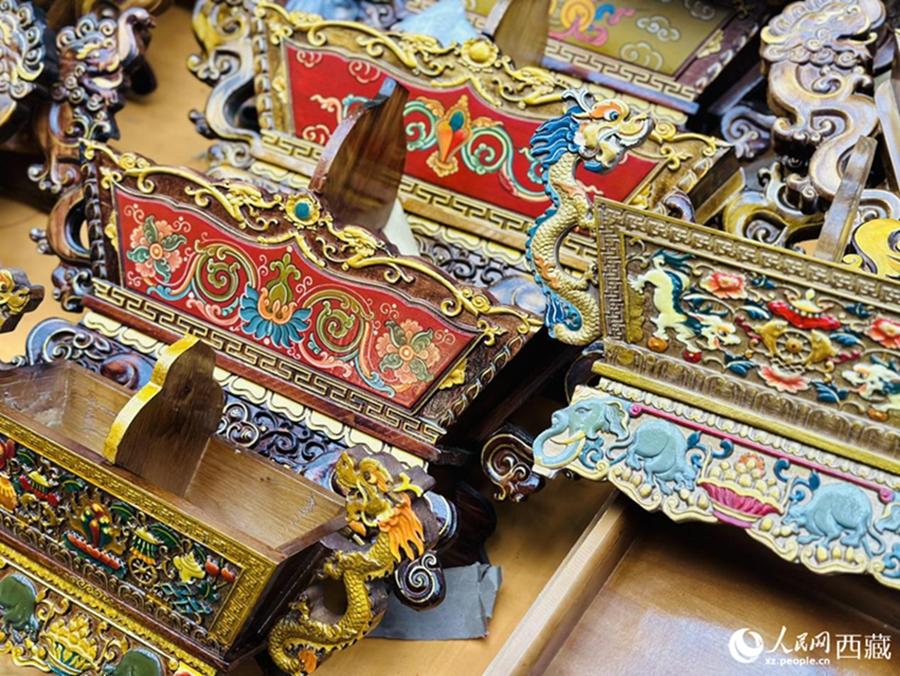A look at the festive vibes of Tibetan New Year in a Lhasa market, SW China's Xizang
Photo shows locals as they sew colorful prayer flag trees on a street in Lhasa, capital of southwest China's Xizang Autonomous Region, in preparation for the 2025 Tibetan New Year. People of the Tibetan ethnic group have a long tradition of replacing the colorful prayer flag trees on their rooftops during the Tibetan New Year to pray for a bountiful harvest and good fortune in the coming year. (People's Daily Online/Tsering Norbu)
As the 2025 Tibetan New Year, known as Losar, draws near, markets in Lhasa, capital of southwest China's Xizang Autonomous Region, have entered their busiest time of the year, offering a wide variety of goods for use during the festival.
Chongsaikang market, a consumer goods market on Barkhor Street, Chengguan district, Lhasa, is teeming with people and filled with the rich aromas of various festive foods, including butter and barley wine, as well as the cheerful sounds of "Tashi Delek" (a traditional Tibetan New Year greeting).
The 2025 Tibetan New Year, as the most important festival in the Tibetan calendar, falls on Feb. 28.
Special purchases for the festival range from handcrafted butter sculptures and ingredients of traditional foods to Tibetan-style cultural and creative products that blend modern designs with traditional Chinese cultural elements.
Photo shows a market offering various products with elements of the Tibetan culture, in Lhasa, capital of southwest China's Xizang Autonomous Region. (People's Daily Online/Tsering Norbu)
Photo shows exquisitely crafted butter sculptures for sale at a market in Lhasa, capital of southwest China's Xizang Autonomous Region. (People's Daily Online/Tsering Norbu)
Photo shows Tibetan-style cultural and creative couplets for the Tibetan New Year for sale at a market in Lhasa, capital of southwest China's Xizang Autonomous Region. (People's Daily Online/Tsering Norbu)
Local residents buy exquisitely crafted Tibetan-style bamboo containers at a market in Lhasa, capital of southwest China's Xizang Autonomous Region. (People's Daily Online/Tsering Norbu)
Photo shows Tibetan-style decorative items featuring the eight auspicious symbols of Tibetan Buddhism for sale at a market offering goods for use during the Tibetan New Year. (People's Daily Online/Tsering Norbu)
Photo shows Losar Metok for sale at a supermarket on Barkhor Street, Chengguan district, Lhasa, capital of southwest China's Xizang Autonomous Region. Losar Metok is a special flower-like decoration that people of the Tibetan ethnic group often use to decorate their homes during the Tibetan New Year, (People's Daily Online/Tsering Norbu)
Photo shows chema boxes for sale at a market offering goods for use during the Tibetan New Year. Chema boxes are a type of two-tier rectangular wooden boxes containing roasted barley, fried wheat grain and Zanba (a traditional Tibetan staple food made of barley flour), symbolizing longevity and good fortune. (People's Daily Online/Tsering Norbu)
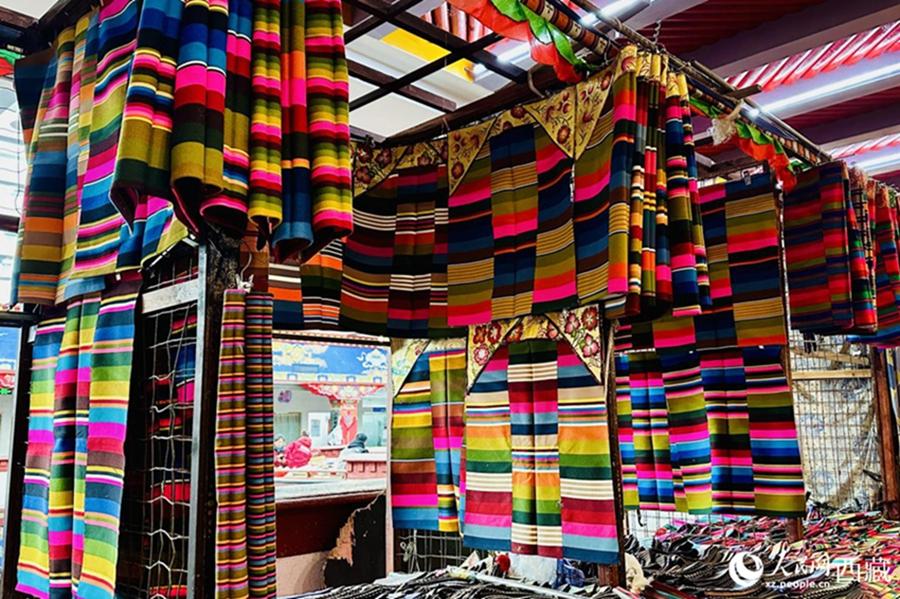
Photo shows colorful Bangdian for sale at a market offering goods for use during the Tibetan New Year. Bangdian is a type of colorful, finely striped woolen ornament typically worn around the waist by Tibetan women. (People's Daily Online/Tsering Norbu)

